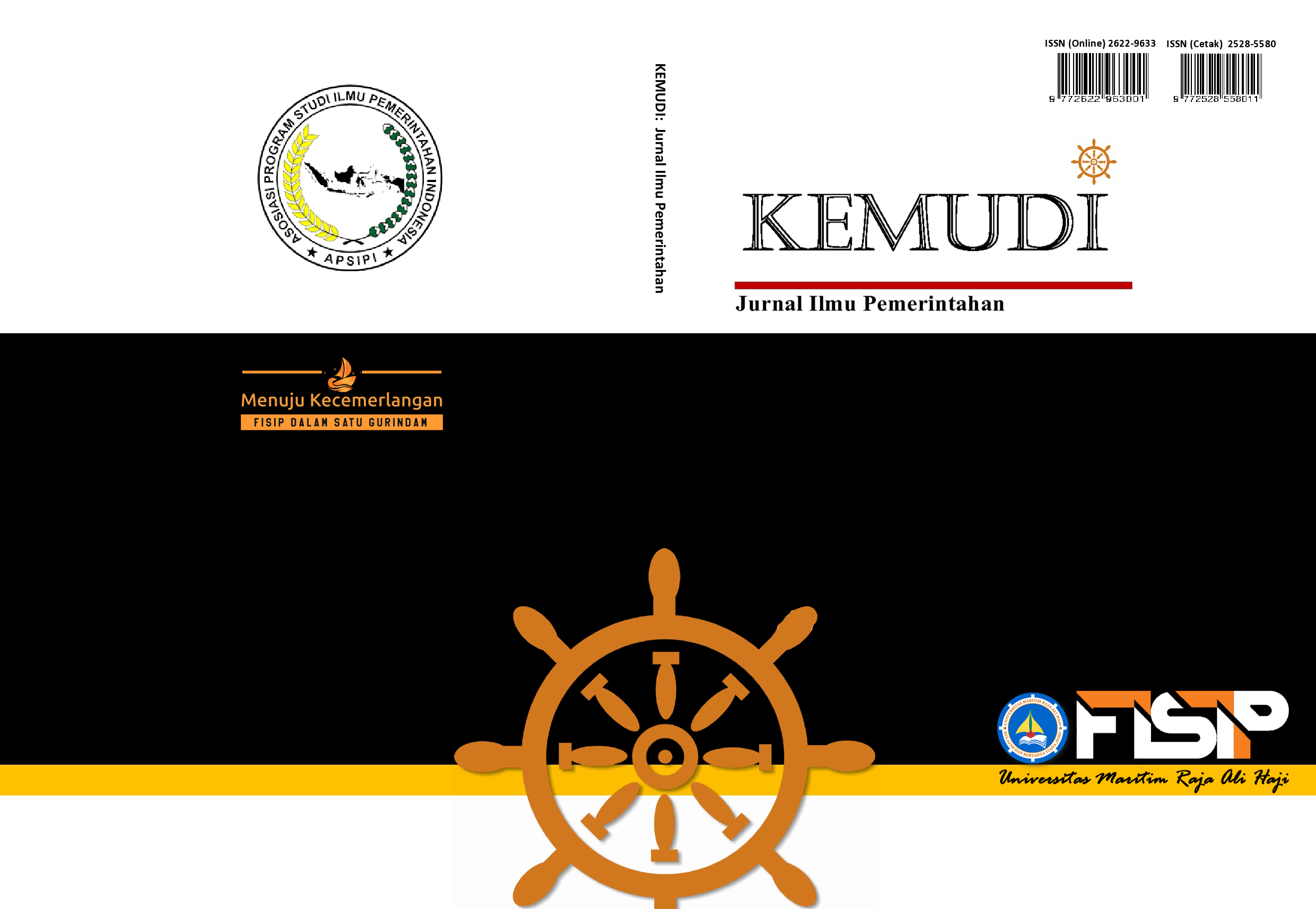Evaluation of Policies to Accelerate Reduction of Extreme Poverty in Meranti District
DOI:
https://doi.org/10.31629/kemudi.v9i2.7247Kata Kunci:
Policy Evaluation, PovertyAbstrak
Optimism to end poverty in 2030 is entering a pessimistic phase. The unfinished pandemic and geopolitical conflict has an impact on the most basic problem, namely the food crisis and has caused poverty rates to increase. In responding to global challenges regarding many poverty issues, more than 160 countries have agreed to create an action plan in Sustainable Development Goals (SDGs). The Poverty and Shared Prosperity report at the end of 2022, it turns out that 10.7 percent of the global population is in poverty. It is recorded that 767 million people live below the international poverty line. The current phenomenon that is occurring is that the poverty rate in Indonesia has reached 27.77 million people or 10.64 percent with the total population of Indonesia amounting to 275.77 million people in 2022. In the Extreme Poverty Reduction Policy Program in Indonesia, Meranti Islands Regency is a priority area with The number of poor people is 45 thousand out of 213,532 people or around 25.28 percent of the total population with the number of extremely poor people being 11.22 percent. The Policy Evaluation Theory put forward by William N Dunn is an indicator for analysis. This research will be carried out in Meranti Regency. The aim of this research is to resolve the chaotic problem of extreme poverty. The method and type of this research is Qualitative Descriptive. The technique for withdrawing informants uses a proportional sampling technique and data collection techniques in this research are interviews, observation, literature study and documentation.Indonesia has a forest area of around 94.1 million hectares which consists of various spatial functions including those used as Production Forests. Production forests which are currently used are around 63 million ha of Indonesia's forest area which is divided into permanent production forest areas, limited production forests. , and convertible production forests (HPK). In accordance with the policies contained in the Agrarian Reform Object Land (TORA) program issued by the central government, HPK is one of the targets used for area release. The current phenomenon that is occurring is that TORA does not accommodate land issues that previously had property rights issued by the National Land Agency which then turned into Convertible Production Forests. So far, what has arisen regarding land issues is the land mafia, but in this phenomenon the community is harmed again by changes in areas where the land with property rights status cannot be cultivated and bought and sold. This research will be carried out in Riau province with the National Land Agency and the Riau Provincial Forest Service as objects. The aim of this research is to resolve disputes over land issues, not only TORA, but also people who previously had land rights issued by BPN, changing their status to HPK. The method and type of this research is Qualitative Descriptive. The technique for attracting informants uses a proportional sampling technique and data collection techniques in this research are interviews, observation, literature study and documentation.
Unduhan
Referensi
Amirulkamar, S., & Hidayati, U. (2023). Extreme Poverty Alleviation Model In Alleviating Social Inequality (Sociological And Sharia Approaches In Poverty Alleviation Policy In Indonesia). Al-Risalah: Forum Kajian Hukum Dan Sosial Kemasyarakatan, 23(2), 215–228. https://doi.org/10.30631/alrisalah.v23i2.1474
Badan Pusat Statistik (BPS) https://merantikab.bps.go.id/id/ diakses pada tanggal 2 April 2024 pada jam 10.00 WIB
Djulius, H., Lixian, X., Lestari, A. N., & Eryanto, S. F. (2022). The Impact of a Poor Family Assistance Program on Human Development in Indonesia. Review of Integrative Business and Economics Research, 11(4), 59–70. https://www.scopus.com/inward/record.uri?eid=2-s2.0-85149800428&partnerID=40&md5=6abb9068df48baf3675403b6cd4bc5f4
Harahap, Sofyan Syafri. 2006. Analisis Kritis Atas Laporan Keuangan. Jakarta: PT. Raja Grafindo Persada.
Hicks, N. L. (2019). Is there a tradeoff between growth and basic needs? In The Gap Between Rich and Poor: Contending Perspectives On The Political Economy of Development (pp. 338–350). https://doi.org/10.4324/9780429311208-24
Nugroho, Heru. 1995. Kemiskinan, Ketimpangan dan Kesenjangan. Yogyakarta : Aditya Media.
Supriatna, T. 1997. Birokrasi Pemberdayaan dan Pengentasan kemiskinan. Bandung: Humaniora Utama Press (HUP).
Suryawati. (2004). Teori Ekonomi Mikro. UPP AMP YKPN: Yogyakarta
Tim Nasional Percepatan Penaggulangan Kemiskinan (TNP2K) https://www.tnp2k.go.id/ diakses pada tanggal 2 April 2024 pada jam 10.00 WIB
William N. Dunn, Pengantar Analisis Kebijakan Publik (Yogyakarta: Gajah Mada University Press, 2000), cet. ke-IV,.
Unduhan
Diterbitkan
Terbitan
Bagian
Lisensi
Hak Cipta (c) 2025 Kemudi

Artikel ini berlisensiCreative Commons Attribution-NonCommercial-ShareAlike 4.0 International License.




